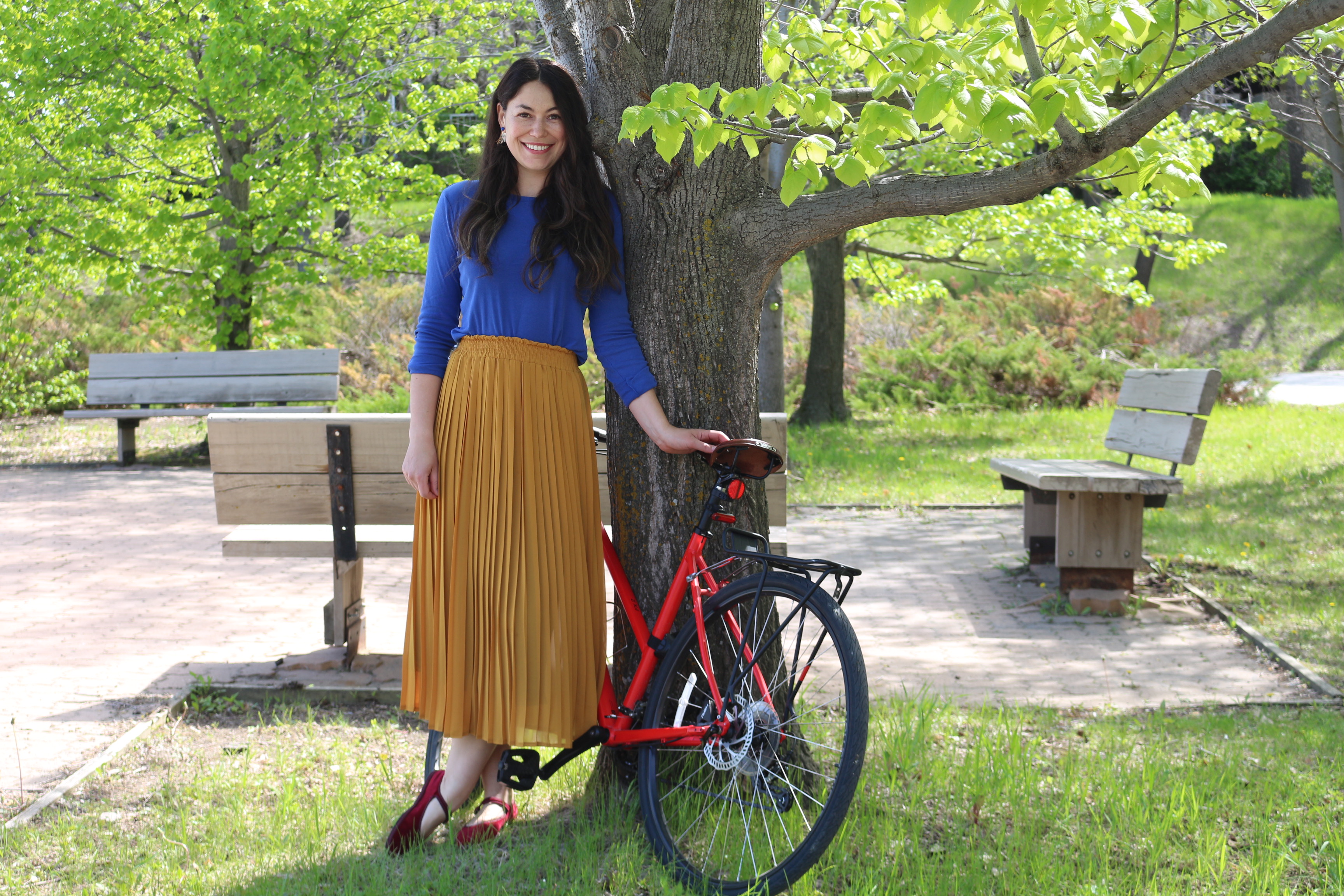
Teaching and Learning
Reimagine Playful Communities among Urbanization
Whitney Blaisdell is an award-winning PhD Candidate in the Faculty of Education at the University of Regina, and a recipient of a Social Sciences and Humanities Research Council (SSHRC) Canada Graduate Scholarship. She is a former public school teacher, the co-chair of the Regina and Area Early Childhood Network, and founder of Project Play YQR, a community-based organization. Her master’s thesis, (Re)Claiming Play: An Individual and Community Movement Towards Playfulness, informed the creation of the community-based organization Project Play YQR. Her arts-based doctoral work engages children in co-imagining and creating ecocritical, child-friendly urban spaces.
Question: Can you share with us the inspiration behind your primary research interest and the founding of Project Play YQR, and how your background in visual arts and arts education influenced your approach to fostering playful communities?
Blaisdell: The first graduate course I took was the Play Summer Institute, offered by Karen Wallace and Patrick Lewis. My son Jonah was an infant at the time, and through both Jonah and the course, my curiosity about play grew significantly. My master’s research attracted participants and community members who helped establish Project Play YQR, based on the research findings and a shared commitment to fostering a more playful community.
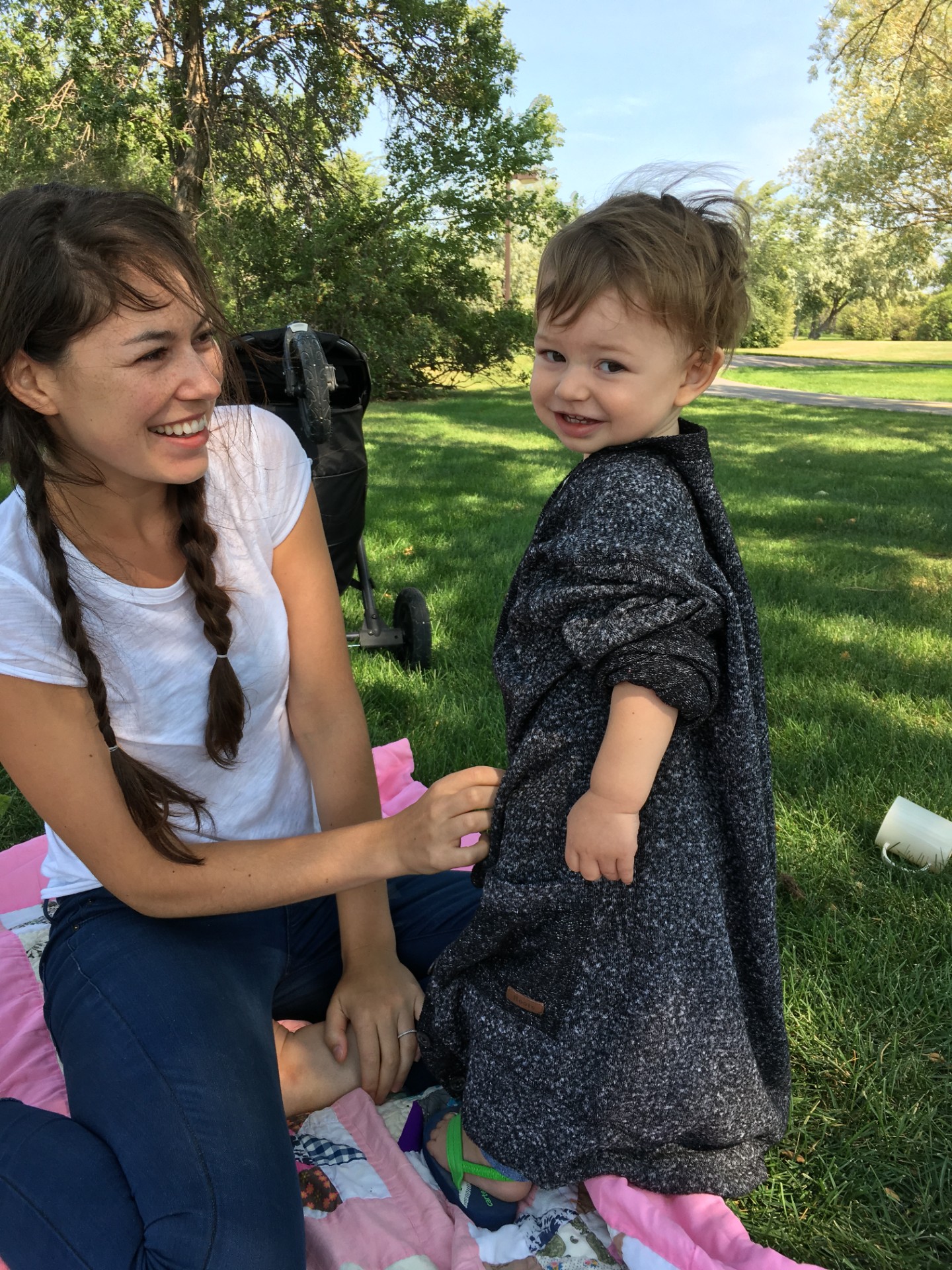
Caption: Whitney and Jonah in a park
Photo courtesy of Whitney Blaisdell
"I think play and the arts are closely related, so many play offerings are artful, and art opportunities are playful." - Whitney Blaisdell
My background in visual arts and arts education is also helpful for understanding the power of aesthetics on how spaces feel and are involved in play and playfulness.
Question: What sparked your interest in researching playful communities, and how has your doctoral research contributed to understanding the importance of play in community development?
Blaisdell: Having been a primary public school teacher, parent, non-profit leader, and student researcher, I’ve gotten to know play in different ways. I’m still learning about how communities influence play and how different spheres of a community (e.g., schools, parks, businesses, roads, nonhumans, childcare) connect and influence one another and play. I’m also interested in intersectionality (of age, race, gender, sexuality, neuro and body diversity) and how public space and play are accessed differently, including creatively and subversively by those often marginalized.
Question: Would you relate your childhood experience and illustrate how these playful experiences have benefited you in your adult life?
Blaisdell: My parents seperated when I was an infant and they each moved a lot, plus my older sister and I moved between them. It led to me spending parts of my childhood with my sister in England, Ontario, Alberta, and Saskatchewan - and sometimes back and forth between these spaces. My parents both had more children, too, so we had a lot of sibling play. My parents’ separation meant that instead of compromising, they each fully expressed their unique parenting styles, which is kind of cool.
My father and stepmom liked structure. We were expected to complete long lists of chores, do our homework diligently, and adhere to the strictest curfews of all our friends. It led to a lot of chore-trading and somehow turned arriving home 60 seconds before curfew into a delightful game. We didn’t have any pets, but while living in England, we spent a lot of time at a family friend’s house full of animals, including a timid pet fox that I spent countless hours with.
My mother was quite eccentric. We had a lot (a lot) of plants and pets, and a lot of autonomy. She used to tell us school was a waste of time but put us in dance, music, and art lessons. I spent a lot of time with my cat in her garden or in the dark, mossy, mystical forest around our home in Alberta. When I was 11, we moved to a suburb outside of Toronto, and the loss of the beauty and mystery of the forest and its creatures was surprising; there was so much concrete and so many people. However, it grew on me. The bus stop became a portal. Friends and I would ride the bus to libraries, swimming pools, movie theatres, parks, concerts, and downtown. There were things for us to do and ways to get there. There was little to no reliance on parental chaperones, and I often think now of how wide our range of movement was and how little adults had to worry about youth driving under the influence of drugs or alcohol. It was magical to come of age in a vibrant urban landscape like Toronto that we got to experience so fully as young people partially because of the public transportation system. It opened the city for us.
I suppose my childhood play memories were quite eclectic and probably have something to do with why I’m so interested in schools’ role in public space and play.
Question: In your recent research article Realizing and Imagining Schools as Sites of Community Care: Lessons from Children Playing during a Pandemic, that were published in the in education journal, you introduced the audience to the research project you carried out and the findings. What would you like to say to parents who are striving to strike a balance between structured learning activities and unstructured playtime? What would you like to say to teachers, school administrators, and the administrators of other community-based organizations?
Blaisdell:
"It has taken me some time to un-see a binary between structured/unstructured activities for children. Structured activities can be highly playful, and ‘unstructured’ does not necessarily equate to play. Children appear very good at un-structuring structure, and that, in itself, even seems to invite play." - Whitney Blaisdell
My master’s research brought a lot of attention to the in-between moments surrounding structured activities, too: Can children walk, bike, carpool, or hop on a bus with friends rather than being driven in private cars to their activities? That’s where a lot of play happens; it’s on the way to the lesson or practice or stopping to pick up a treat on the way home.
What has me so interested in exploring playful communities now that I am starting to understand the importance of such things more fully is that this isn’t just a family choice to offer kids more freedom. Often, activities occur outside children’s neighbourhoods in a city that does not have reliable public transportation, protected bike lanes, or pedestrianized neighbourhoods with traffic-calming measures to support children’s walking and cycling. These are all components of what is considered child-friendliness, which I’m interested in exploring with my doctoral research, and that requires attention and support from diverse avenues to foster.
It seems the same in schools; in the study you mention, parents were sharing how the things children missed the most about schools when they physically closed over the pandemic, were hallway conversations, recess, interacting with friends, and hearing their names spoken out loud. I happen to be reading Erin Manning’s book The Minor Gesture, and it is these minor chords, coursing through major events like school and classes and assemblies, that children are recalling and naming and mourning, and that matter to them and give them a sense of belonging and care in their lives and communities. I think it’s important for teachers and administrators to remember this, especially because it is often their invisible labour that contributes to it.
Question: This research article suggests that children could play a more visible and tangible role in shaping their communities. Would you give one or two examples of municipal facilities or programs (it could be anywhere in the world) that best exemplify the idea that children are important participants in society and that society would change and bend as it cares for children?
Blaisdell: The first thought that came to mind was in Tampere, Finland, where I was fortunate to attend a conference.
The street I walked from my hotel to the university had a priority bus lane, a protected bicycle lane, and a pedestrian sidewalk, for both directions of traffic (so two bus lanes, two cycling lanes, two sidewalks).
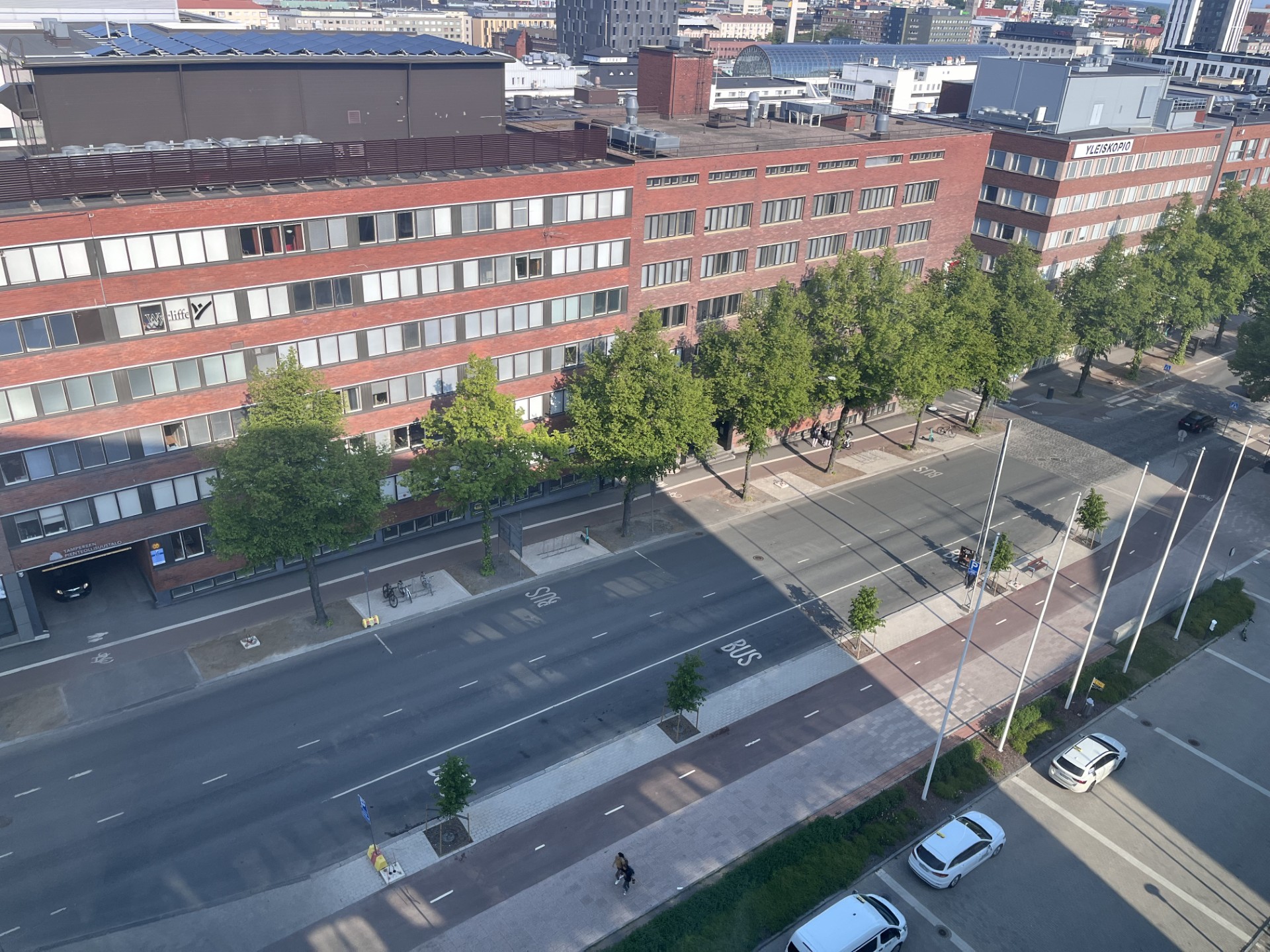
Caption: Road markings found in a city in Finland
Photo courtesy of Whitney Blaisdell
Furthermore, on the sidewalks were painted images of a large and small body, resembling an adult and child body walking together.
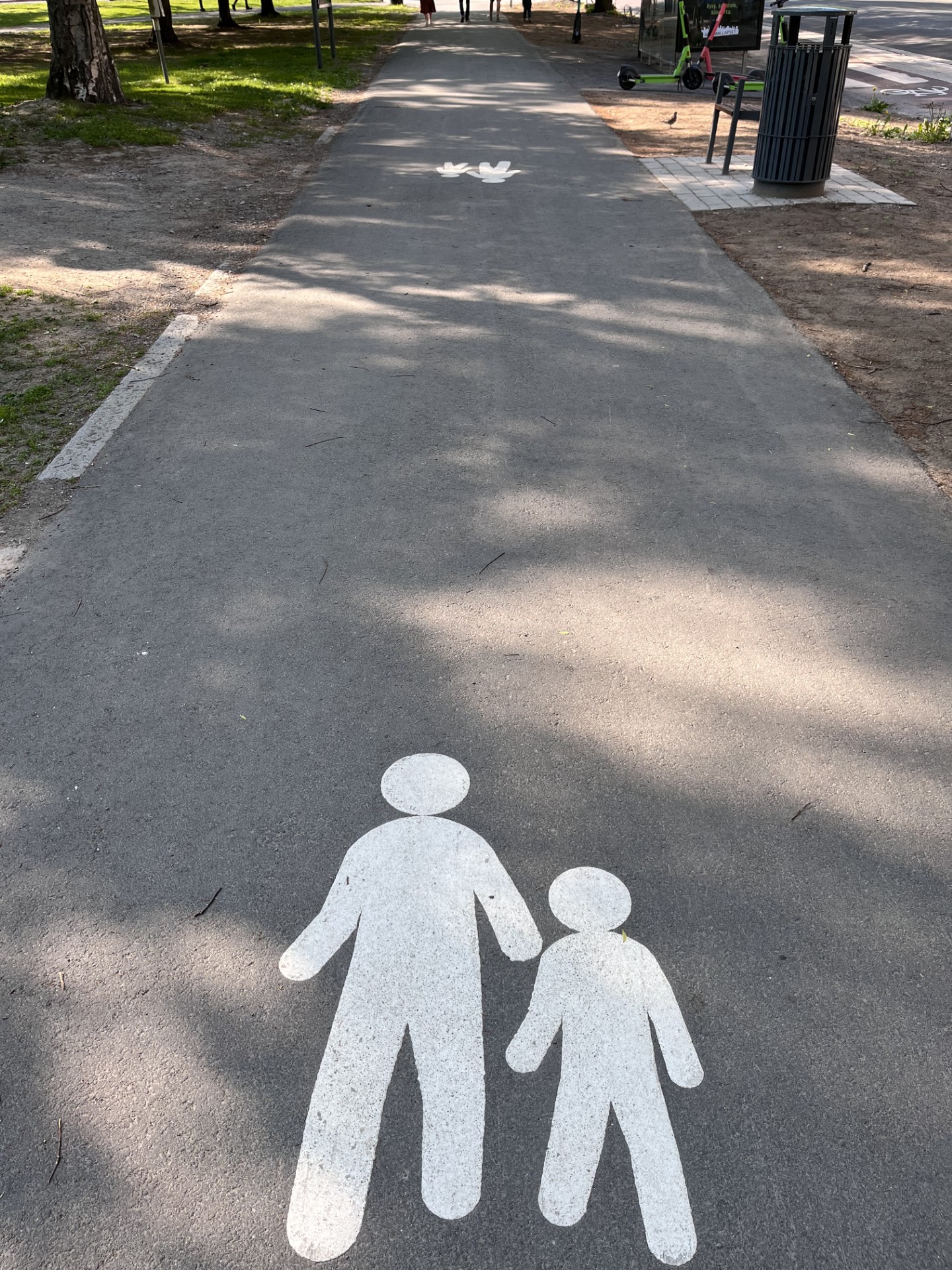
Caption: Sidewalk stamp found in a city in Finland
Photo courtesy of Whitney Blaisdell
Children’s visible presence, therefore, was quite literally stamped onto public space and repeated as a pattern throughout the city. I was there during the school year, and I noticed that children frequented parks and public spaces with their teachers. They walked, conversed, studied, and drew; children seemed to be an expected and ordinary part of daily public life.
I also want to take the opportunity to discuss what this makes possible. There were mason bee houses attached to trees all over the parks, at low heights, that children were examining and checking in on and seemed to be working with.
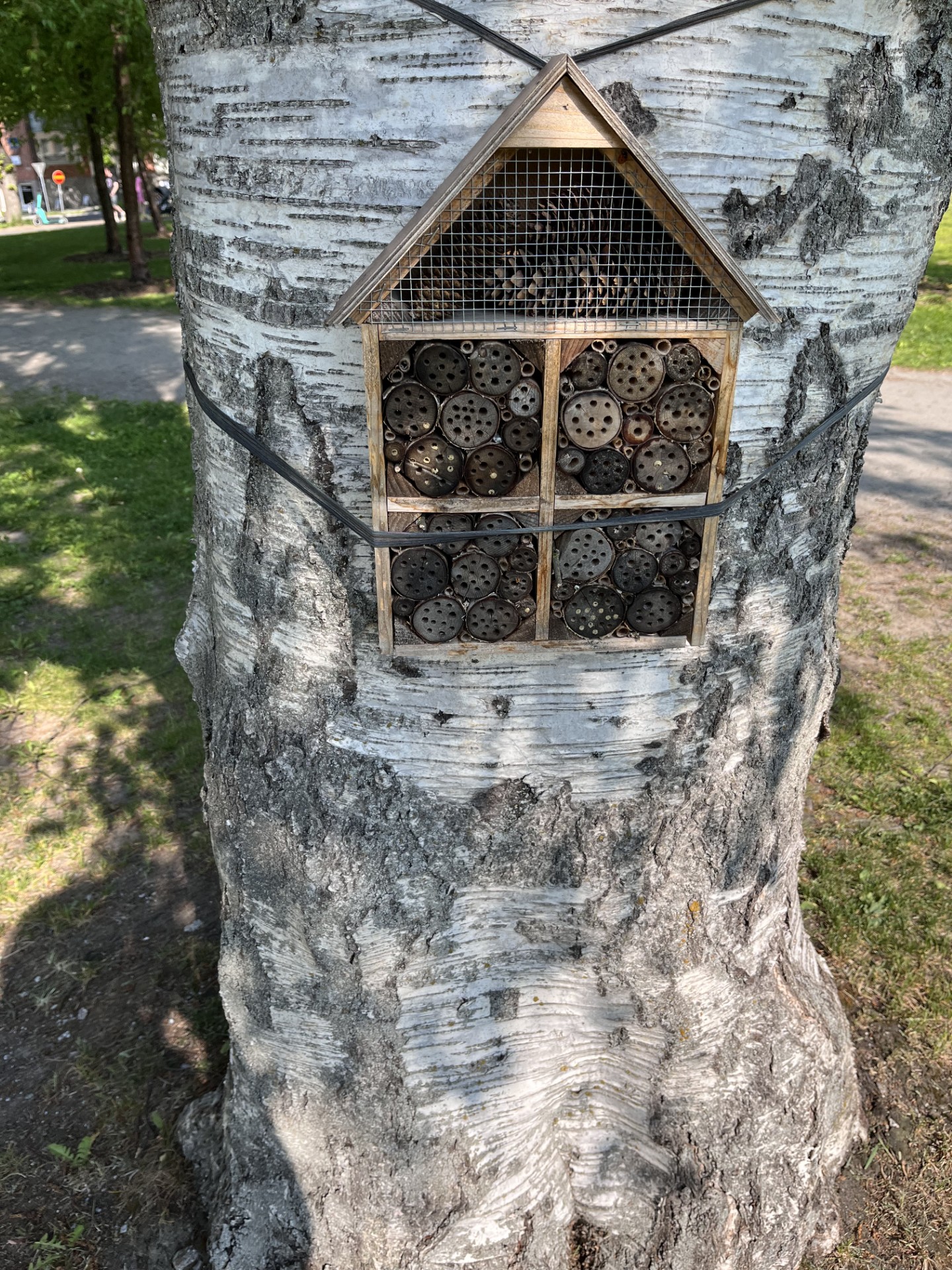
Caption: Mason bee houses at a park in Finland
Photo courtesy of Whitney Blaisdell
The parks were not manicured grass that typically requires fertilizers and herbicides; instead, dandelions, clover, and wildflowers grew everywhere. For the frequency and duration that childcare and school-aged children seem to spend in green spaces, playing, drawing, reading, listening, sleeping, and picnicking in Finland, frameworks of human superiority may highlight an ethical dilemma around the use of chemicals in parks and the non-discriminate harm they can cause to beings they contact.
Even wrapped up in the little things I witnessed in a few days, are ethics and collaborations and care for children that are outside of the major politics I have seen in Regina and stand out as examples of how the ways that public space is planned and maintained can contribute to multispecies harm, or flourishing.
Question: Can you talk about the support systems or resources available at the University of Regina that helped facilitate your research? Based on your experiences, what advice would you give to current students at the University of Regina?
Blaisdell: Funding is an immense support. I have found the Faculty of Graduate Studies and Research scholarships to be generous, and I have been fortunate to have received a couple of other scholarships. The federal funding I received is certainly thanks to a funding workshop that the university offered, and the students and faculty who helped me clarify my application. The Community Engagement and Research Centre, and Regina Public Interest Research Group have financially supported my work and encouraged me to understand and conduct scholarship as a public good.
For more information, visit Graduate Scholarships and Funding website.
I work with Marc Spooner as a supervisor, and in my experience, that has meant being able to follow where my curiosity wanders, and on my own timeline. I started with play, which I’ve followed far outside of early childhood into seemingly less expected spaces. Valerie Triggs, Emily Ashton, and Vanessa Mathews, who make up my committee, all also seem to listen to my interests and ideas and use their interests and ideas to offer support and invaluable feedback throughout the process. There is an undeniable generosity in offering this type of openness and support to students.
I also find such generosity and support in ordinary encounters with students and faculty. I’ve received reading suggestions and exchanged books, articles, and chapters simply because of little in-between conversations, and they’ve helped me to think differently. Sometimes, it helps facilitate my research; sometimes, it opens my mind in new ways; and sometimes, it just makes me happy.
"My advice is to find friends, seek support, and offer support when needed." - Whitney Blaisdell
Also, know the university provides free mental health services to students. I use them. Graduate school is meant to be challenging but can also be cruel and unhealthy. Friendship, play, and professional mental health support are invaluable here.
For more information, visit the Faculty of Education's Doctor of Philosophy in Education Program website.
Question: Could you briefly share your current projects / future works?
Blaisdell: I received ethics approval for my dissertation research involving participatory arts-based research with children. The non-profit organization Project Play YQR, which began out of my master’s research, is working on an Indigenous-led and facilitated play project.